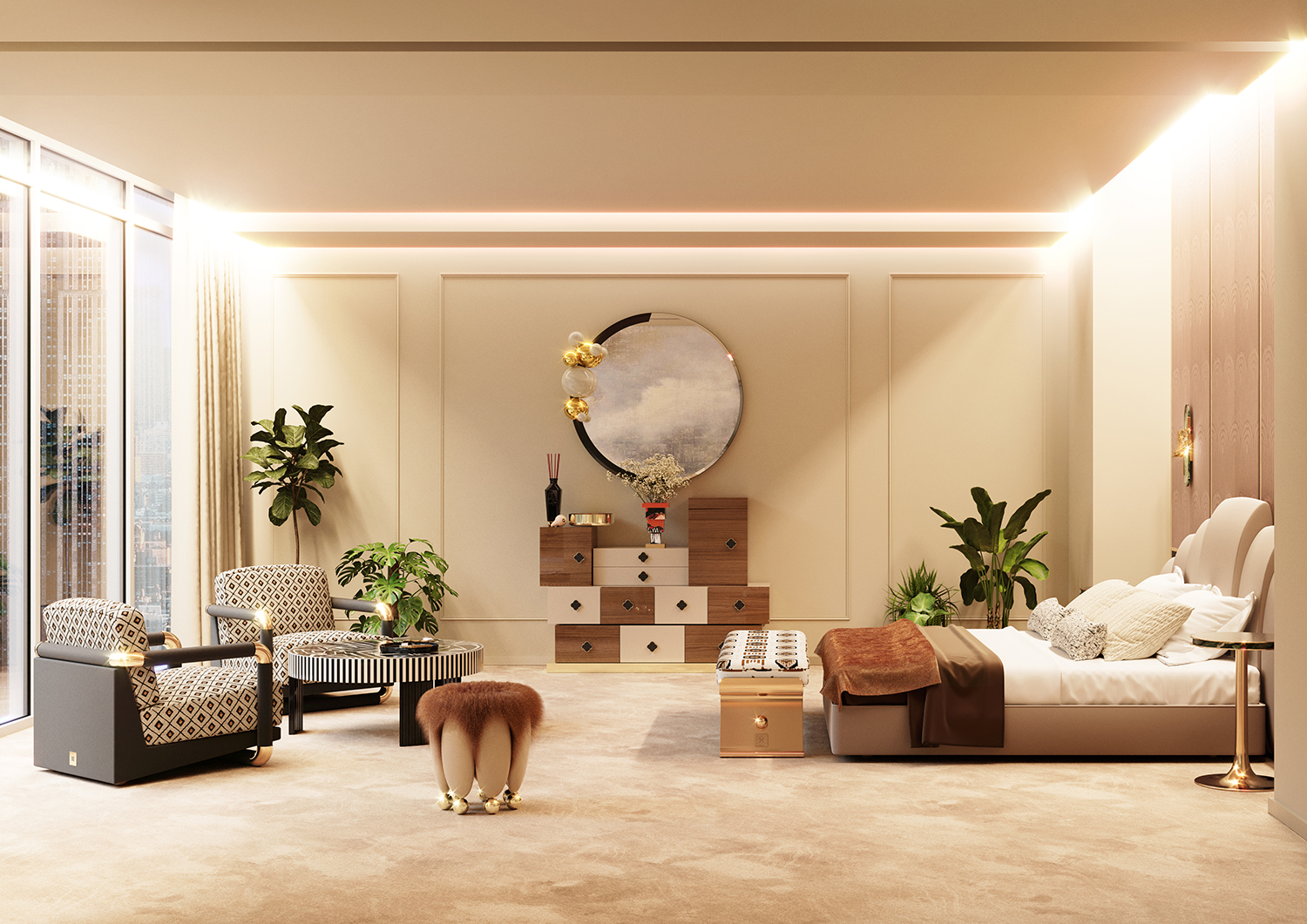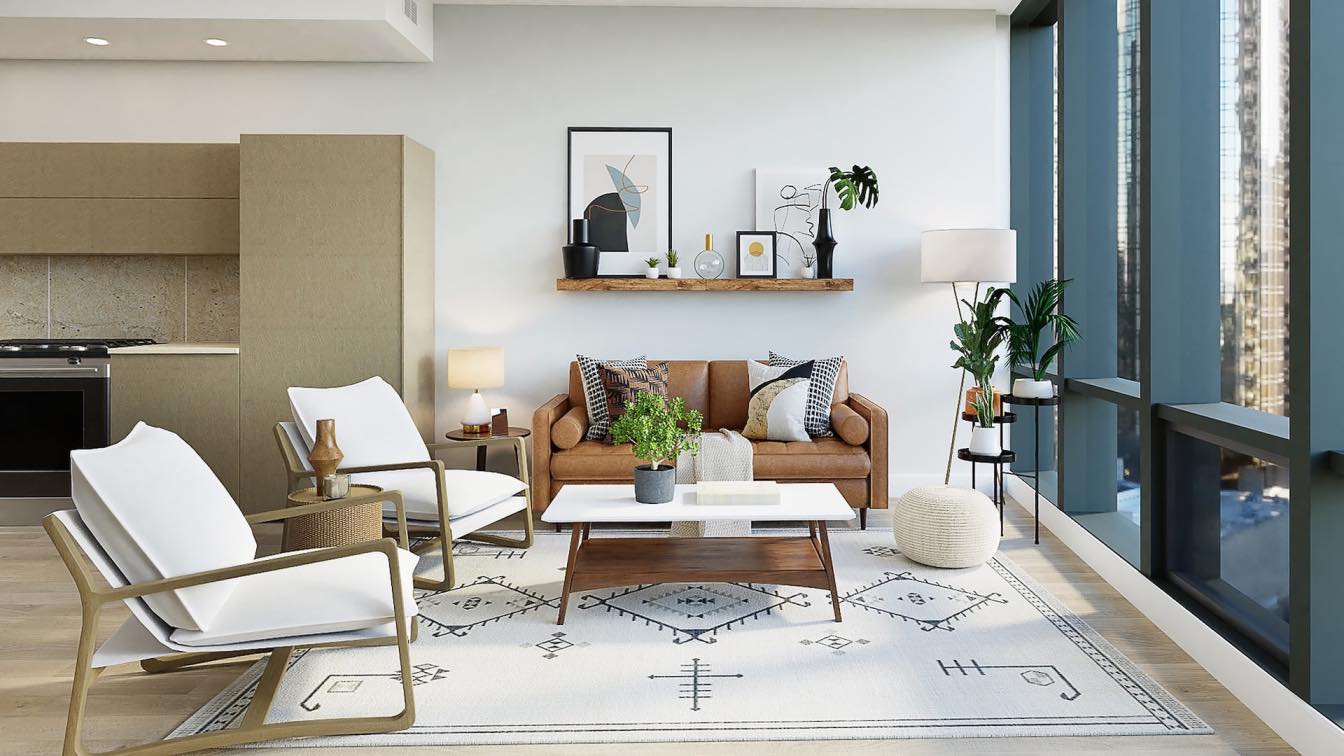What Are the most recent Patterns in Interior Style That Can Boost Your Home?
In the ever-evolving realm of interior style, a merging of customization, functionality, and sustainability is shaping modern rooms (Interior architecture Miami). Checking out these patterns exposes how they can change your home into a representation of both personal preference and useful demands, welcoming a closer exam of what absolutely boosts a living room.
Sustainable Style Practices
Sustainable design practices have actually become a foundation of modern interior decoration, reflecting an expanding recognition of environmental impact. These practices focus on making use of environment-friendly materials, energy-efficient systems, and waste reduction methods, intending to develop interiors that are not only visually pleasing but likewise eco accountable.
One key aspect of lasting layout is the option of materials. Designers significantly prefer redeemed timber, recycled metals, and low-VOC (unstable natural substances) paints, which decrease harmful emissions and advertise healthier indoor air top quality. The unification of all-natural light through strategic home window positionings minimizes reliance on synthetic lights, thereby preserving power.
One more important aspect is the implementation of reliable heating, cooling, and water supply. Using wise technology can maximize power consumption, while rain harvesting systems add to lasting water monitoring. Furthermore, furniture and style are regularly sourced from neighborhood craftsmens, better reducing the carbon footprint connected with transportation.
Inevitably, sustainable design practices not only improve the capability and durability of areas yet likewise promote a much deeper connection to the setting (Luxury Interior designer Miami). As customers end up being progressively diligent, these methods will likely proceed to shape the future of interior design, creating spaces that reverberate with both beauty and sustainability
Strong Shade Combinations
Bold color schemes have become a specifying pattern in interior decoration, permitting rooms to make striking declarations and mirror individual style. The use of vivid shades can change an otherwise common area into a fascinating setting. Developers are significantly embracing rich jewel tones, saturated primaries, and unanticipated shade mixes to develop a sense of dramatization and vibrancy.
Incorporating strong shades can be attained with different components, including walls, furnishings, and accessories. As an example, an accent wall repainted in a deep emerald environment-friendly or a striking cobalt blue can work as a focal point, while vivid furniture or art work can instill energy right into the space. Layering different tones within the same color family members includes depth and interest, improving the total aesthetic.

In addition, using contrasting shades can rejuvenate a space, drawing interest to architectural functions and style aspects. This technique urges home owners to reveal their individuality and embrace imagination in their indoor rooms. As trends develop, vibrant color palettes attract attention as an effective methods of personal expression, making it possible for property owners to curate settings that reverberate with their distinct preferences and lifestyles.
Maximalism Vs. Minimalism
How do individual choices affect the recurring discussion in between maximalism and minimalism in interior layout? Minimalism, defined by clean lines, neutral schemes, and useful furnishings, appeals to those looking for simplicity and harmony.
Conversely, maximalism accepts enthusiasm through vibrant colors, diverse patterns, and an abundance of design. This style encourages personal storytelling, enabling property owners to display their official statement unique collections and rate of interests. Maximalism invites creative thinking and self-expression, making it an eye-catching alternative for those that grow on visual stimulation and variety in their environments.
The discussion between maximalism and minimalism inevitably depends upon personal taste and lifestyle. While minimalism may reverberate with those who like a peaceful, organized room, maximalism charms to people who celebrate originality and richness in layout. Recognizing one's preferences can guide property owners in developing rooms that mirror their identifications while lining up with modern patterns in interior decoration.
Multi-Functional Spaces

The design of these rooms frequently incorporates ingenious furniture remedies, such as couch beds, extendable table, and modular shelving, which can adjust to various features throughout the day. For example, a living room can perfectly change right into a home workplace or a guest room, optimizing utility without compromising design.
Additionally, the integration of modern technology plays a crucial function in boosting multi-functionality. Smart home gadgets can streamline operations, allowing property owners to control lighting, temperature level, and also protection with convenience, thus developing a more adaptable living environment.
Along with practicality, the visual charm of multi-functional spaces can be accomplished through thoughtful design selections. Open flooring plans, natural color palettes, and calculated zoning with rugs or furnishings can delineate locations while guaranteeing an unified flow. Ultimately, accepting multi-functional spaces not just maximizes living areas yet likewise improves the overall home experience.
Biophilic Design Elements
A boosting variety of indoor designers are integrating biophilic layout elements to promote a much deeper connection between indoor rooms and the natural surroundings. This layout viewpoint stresses the assimilation of nature right into the constructed atmosphere, promoting health and improving the aesthetic appeal of a room.
Key biophilic layout components consist of the usage of all-natural materials, such as bamboo, stone, and timber, which produce a cozy and inviting environment. Incorporating greenery, through upright yards or indoor plants, not only boosts air top Homepage quality yet likewise includes a revitalizing aesthetic component. All-natural light is another critical facet; optimizing home windows or using skylights can optimize daytime, lowering reliance on my blog synthetic lights.
Water attributes, such as aquariums or water fountains, stimulate peace and can serve as prime focus within a room. In addition, shade schemes influenced by nature-- earthy tones and shades of environment-friendly and blue-- cultivate a soothing atmosphere.
Integrating these biophilic components not just boosts the aesthetic worth of a home but also adds to enhanced psychological health and wellness, making them a crucial consideration for contemporary interior decoration.

Final Thought
The most up to date fads in indoor layout underscore the value of functionality, sustainability, and personalization. Highlighting biophilic components and environmentally friendly products promotes health while vibrant color combinations and maximalism boost private expression. The recurring dialogue between maximalism and minimalism reflects diverse aesthetic choices, and the surge of multi-functional spaces addresses contemporary living challenges. Jointly, these trends not only raise residential atmospheres but also add to an extra sustainable and personalized approach to interior layout.
In the ever-evolving world of indoor layout, a merging of sustainability, capability, and personalization is shaping modern rooms.Bold shade schemes have come to be a defining pattern in interior design, enabling rooms to make striking statements and show individual design. While minimalism may resonate with those that choose a tranquil, organized room, maximalism allures to people who celebrate originality and richness in design. Recognizing one's preferences can direct property owners in creating areas that reflect their identities while lining up with contemporary patterns in indoor design.
In enhancement to practicality, the visual appeal of multi-functional spaces can be attained via thoughtful design options.